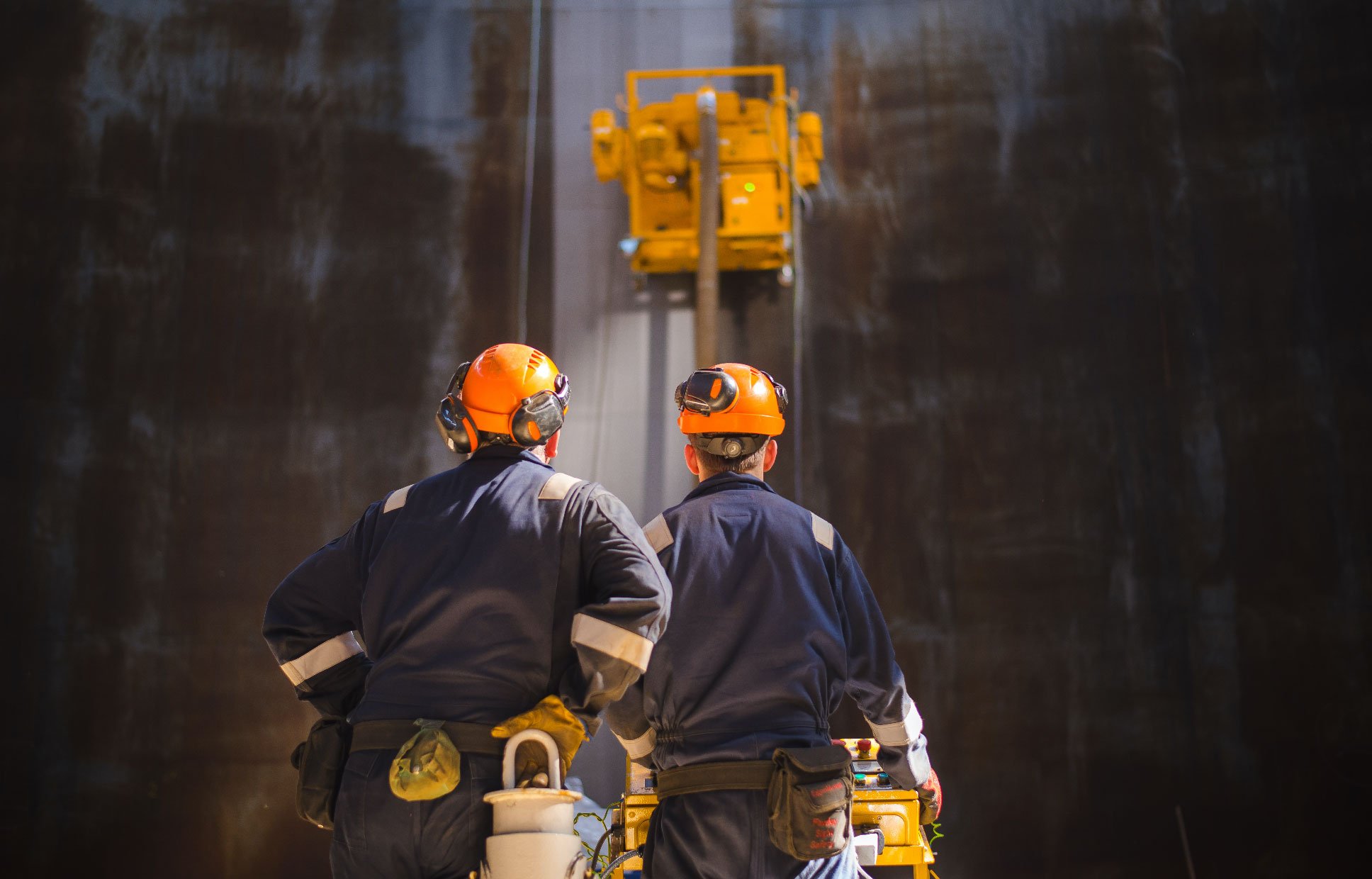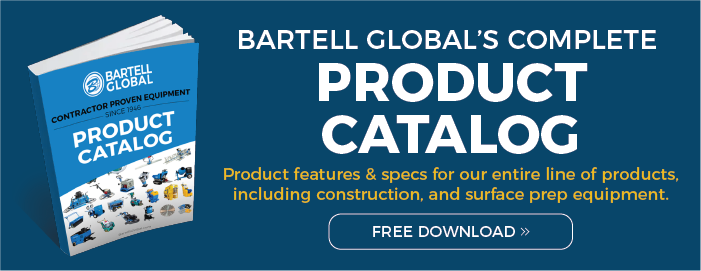In the construction and demolition industries Vacuums or Dust Extraction Equipment are used as a more efficient way of cleaning up the workplace, as well as the first line of defense in protecting workers from breathing in hazardous particles that are a result of grinding, sawing, cutting etc. various materials.
If you’ve used a vacuum or have looked into investing in one, I’m sure you’ve come across the terms CFM and Water Lift. Understanding what those terms mean and the importance of each one will be very helpful when choosing the right piece of Dust Extraction Equipment for the job.
But first, understanding the basic concept of what a vacuum is, is important in understanding how CFM and Water Lift are applicable.
HOW DOES A VACUUM WORK?
The concept is all based on the difference between high and low air pressure and air flow.
Start by thinking of it in a simple context, like drinking water through a straw: You’re creating lower air pressure in your mouth by internally sucking in. As a result, the surrounding pressure (which is higher than the air pressure in your mouth) forces the liquid up through the straw and into your mouth.
Vacuums work the same way. They are essentially a motor enclosed in a hollow frame, so that when turned on, the motor lowers the air pressure by extracting the air within the enclosed space of the piece of equipment to below the amount of air pressure outside of the vacuum. The surrounding air pressure outside of the vacuum forces the air up through the hose and into the vacuum.
The dirt and debris that gets sucked up with the air passing through a filter which captures those particles – allowing for clean air to be released.
WHAT IS CFM?
CFM stands for Cubic Feet (of air) per Minute. It refers to the air flow that is measured by how much air is taken in through the opening of the hose, which generally for everyday vacuums or even industrial dust extractor systems, isn’t any bigger than 2 inches. This is important because it tells us how much air volume the motor can move through the hose and into the vacuum. It's important to have high CFM especially when you have large amounts of dust created by the tool.
Some Dust Extraction Systems that boast of high CFM but are not fitted with HEPA filters, yet claim to be HEPA ready, do not take into account that once the HEPA filter is added, that the CFM will decrease by approximately 30% because the filter creates more resistance. – Keep this in mind when doing your research.
What is Water Lift?
While the CFM refers to how much air the motor can move, the suction measurement that tells us what the vacuum can pull or lift up is determined by using water, hence “Water Lift”.
For the Water Lift test, air flow is absent because the water causes a “sealed suction”, which allows you to measure the pure suction force of the motor. If you had a two-inch hose and it was attached to a 2" column with water at the bottom, you would measure how high you could pull water up the column. The importance of this is to remove the dust from the machine and off the surface.
Which Makes a Better Vacuum?
Some manufacturers boast of high CFM and others of high Water Lift, making it difficult to know exactly which is better, and what to consider when investing in a vacuum or dust extraction equipment. – The answer is both.
Both CFM and Water Lift are required for an efficient vacuum. The key is finding the perfect balance between the two. A Dust Extractor System can have amazing Water Lift but without a high enough CFM there won’t be strong enough air flow pulling the debris up the hose and through the filter. Having said that, if you’re picking up heavier debris like sand or other soils or stone, you’ll want to make sure you have a high enough Water Lift so it can handle heavier particles.
Efficient Water Lift is also an important factor in Dust Extraction Equipment or Vacuums with HEPA filters because that will determine its ability to effectively function at higher resistance, due to the HEPA filter. (More resistance is result of more layers in the HEPA filter) Additionally, efficient Water Lift will ensure that your piece of equipment will continue to perform at high levels, even as the filter begins to fill up with fine particles.
Exceptions to this concept are when a Dust Extraction System is manufactured for a specific purpose or for a specific type of equipment, like the attachable Dust Extraction Systems you would use with an Enclosed Shot Blaster. For Example; in this instance, you’ll want the Water Lift to be low enough so that it won’t immediately pick up the shot being used to do the blasting and suck it into the vacuum. A Shot Blaster is designed so that the Shot used for blasting is flung against the ground with enough force to rebound and enter back into the blasting process until it is broken down into debris where it is then removed by the Dust Extraction System along with the rest of the dust and debris. If the Water Lift is too strong, it would lift the shot and impede the blasting process.
In conclusion, Water Lift gets it going, and CFM keeps it moving. There is a dependence between the two. Making sure both are efficiently contributing to that cycle in a balanced way is key.
Speaking with product experts and asking them the appropriate questions will ensure that you find exactly what you need.
If you have any questions regarding this blog or Vacuums and Dust Extraction Systems. Feel free to contact us and one of our experts will be happy to help.


 By
By 